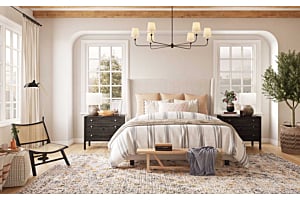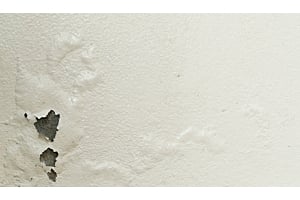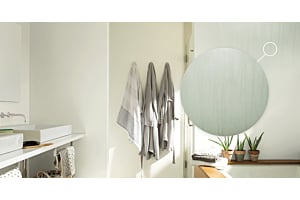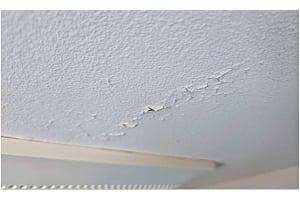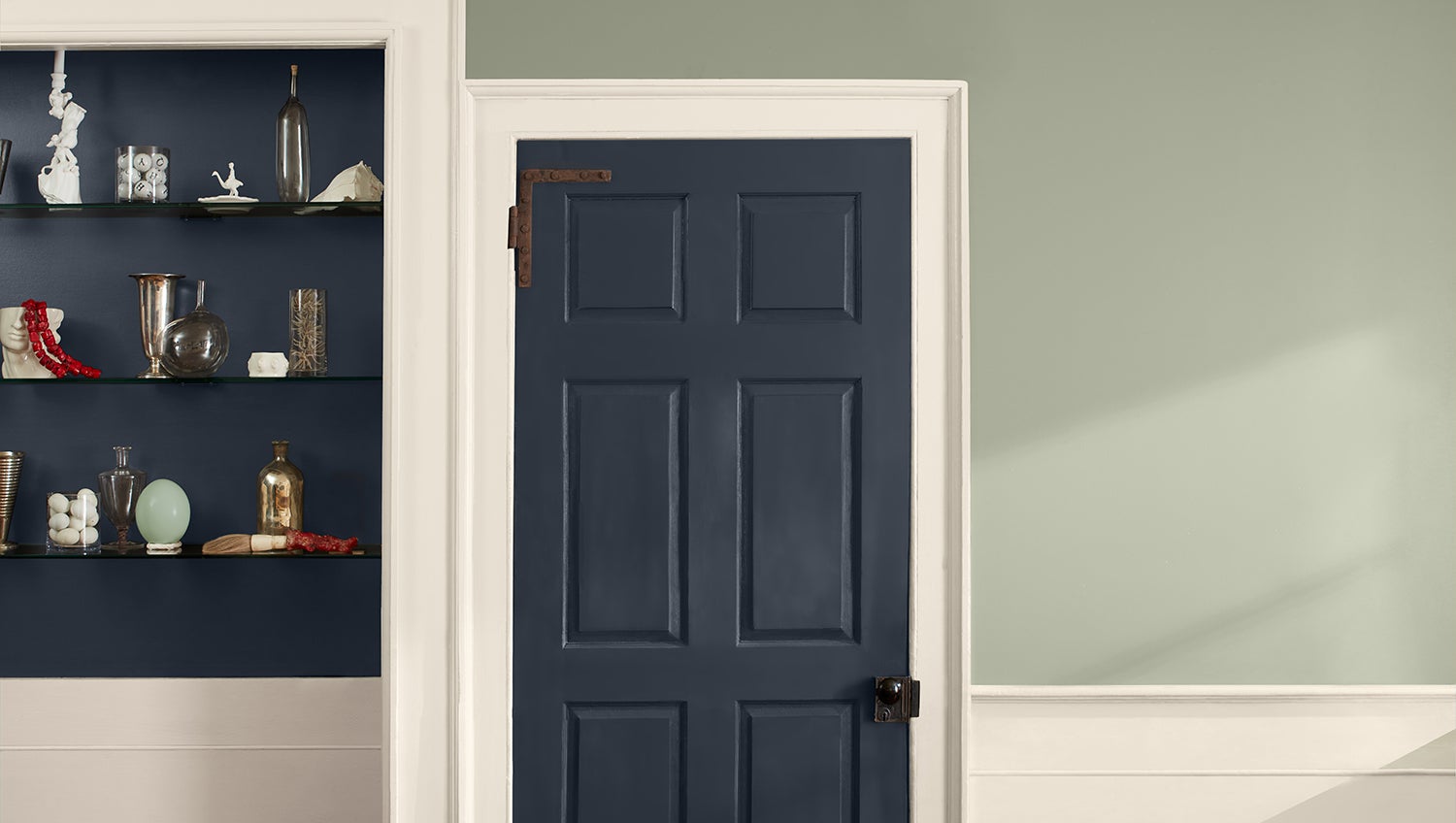
Painting is one of the most popular DIY home projects, but painting interior doors comes with some extra challenges. Knowing the right tools and techniques can help you achieve a smooth paint finish. In this step-by-step guide, we’ll give you in-depth instructions on how to prepare and paint your interior doors for long-lasting, professional results. Plus, our pro tips at the end of the article will help you choose the best type of paint for your doors.
Painting without removing the door from frame:
- Saves time by not having to uninstall and reinstall the doors
- No need to set up a painting and drying area
- Both sides of the door can be painted without waiting for drying time
- Hinges must be carefully taped off
- Bottom edges can’t be accessed for painting
- More possibility of drips
- The door can move – put a rolled towel under the bottom edge to hold it still
Painting a door that’s removed and lying flat:
- A flat door is much easier to paint without leaving drips
- Each edge of the door can be accessed for painting
- Doors can be painted with a sprayer to eliminate brush marks
- You need a space with saw horses for painting and drying time
- Doors are out of the way so other painting projects can continue
- Each side must dry completely before turning to paint the opposite side
- Uninstalling and reinstalling doors takes extra time
When do you need a primer before painting interior doors?
If you’ve purchased brand new doors, they typically have a coat of primer and are ready for paint. For interior doors that have old paint, a coat of primer is strongly recommended. Primer adds grip that helps the new paint to stick. Since doors are typically painted with semi-gloss paint, sanding and priming are key to removing that shine, so you can have a durable finish that will resist chipping.
Supplies You’ll Need for Painting Your Interior Door
- Paint Supplies:
- Interior Primer
- Interior paint in Semi-Gloss or Satin finish
- Sandpaper – 120 grit and 320 grit
- 4-inch microfiber or foam roller
- 2.5″ angled Corona paint brush
- Drop cloth
- Wood filler or spackling to repair damage
- Painter’s tape
- Paint tray and liner
Tools & Supplies from Home:
- Cordless drill or manual screwdriver
- Utility knife
- Hammer
- Large nail
- Mild detergent
- Cleaning sponge and bucket
Note: Interior doors and trim are usually painted with a semi-gloss sheen to make them easier to clean. Glossy paint finishes are more durable so they stand up better to scrubbing. It’s important to choose a paint that is specially formulated to stand up to daily wear on interior doors - Benjamin Moore’s ADVANCE Interior Semi-Gloss is an ideal choice - you can learn more about it by reading our comprehensive Benjamin Moore ADVANCE Paint review. One gallon of paint will typically cover 4-5 doors, so plan accordingly.
10-Step Process for Painting Interior Doors
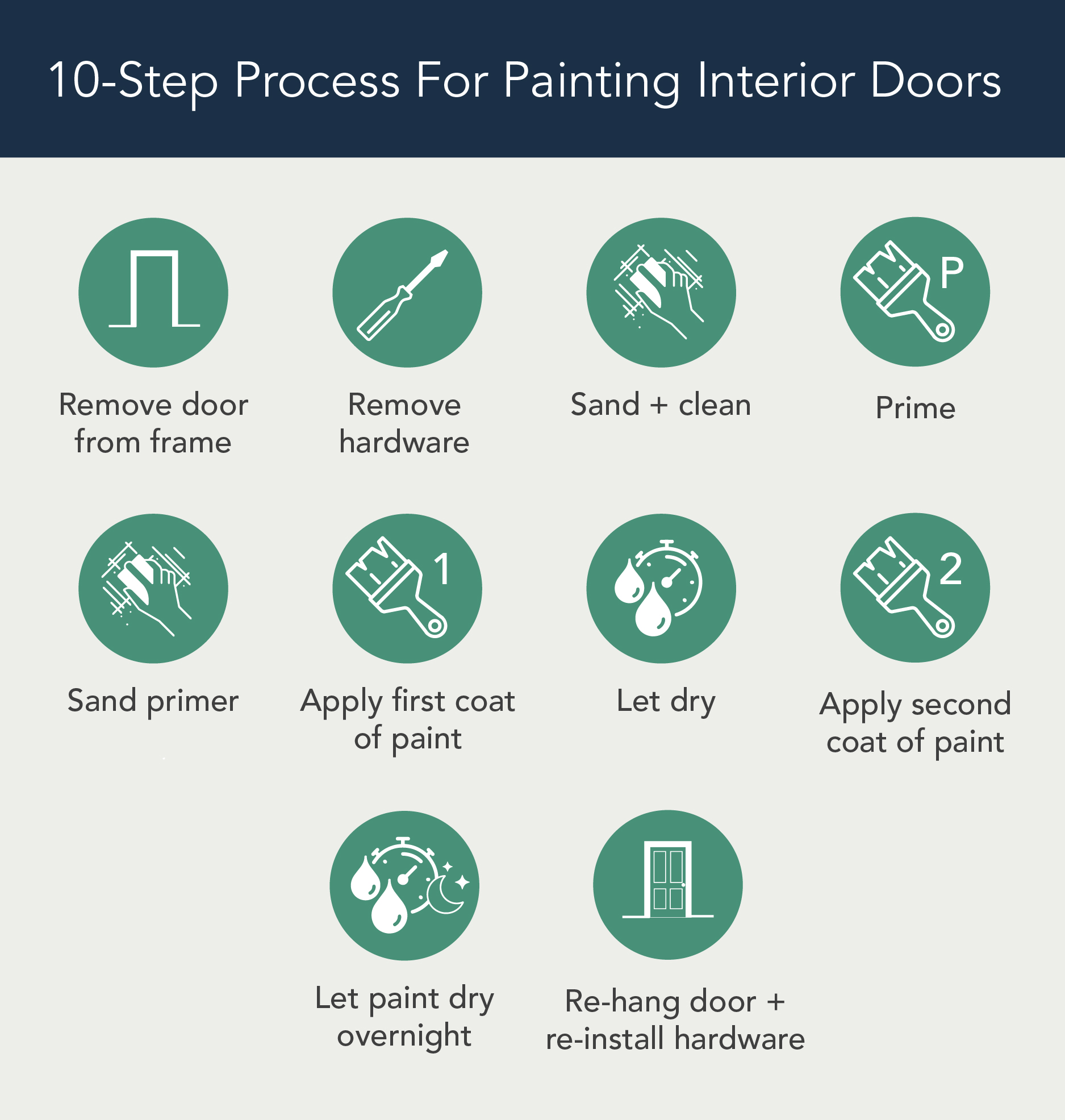
1. Remove the door from the frame (optional):
Use a large nail and hammer to remove the hinge pins in the door hinges. Just put the point of the nail on the bottom of the pin and, and tap firmly with the hammer until the pin raises up enough to pull it out from the top. Take the door off and leave the other half of the hinges on the door frame.
2. Remove the hardware
The best way to paint a door is to remove all door hardware because painting around a door knob or handle is difficult to do without leaving brush strokes. Use the screwdriver to remove the hinges and all parts of the doorknob. Save everything in a plastic bag. To help with reassembly, take a photo of how the parts fit together. If the door is still hanging, carefully cover the hinges with painter’s tape.
3. Sand and clean the door
Sand the door with the 120-grit sandpaper, then wipe it down with the tack cloth. If the door is primed and it has never been painted, sand it gently with the 320-grit sandpaper.
Pro Painter’s Tip: Homes built before 1978 may have lead paint, which can be dangerous when sanded. Test the paint with a lead paint test kit, and use a deglosser instead of sanding for safety. The new primer and paint will encapsulate the old lead paint.
4. Apply a coat of primer
If the door already has primer, skip priming and go straight to paint.
For painted doors, work from the center outwards. Priming and painting the sections of a panel door in the right order will help prevent drips and buildup for a professional result.

Start with the panels, using a brush to paint the recessed molding first, then switching to a roller for the center of the panel. Use the brush to smooth out any paint that pools in the corners. Once all the panels have been primed, use the roller for the remaining flat areas, working from the center out.
Paint the side edges last using a roller. Avoid painting the hinge mortises (the indents in the door for the hinges) because paint buildup can affect the door’s swing. Be sure to also leave the top and bottom of the door unpainted to allow it close correctly.
If you’re using a paint sprayer, watch out for drips and have the brush handy to catch them and smooth out the extra paint.
Pro Painter’s Tip: For black doors, or any dark color scheme, have your paint supplier tint the primer to match the final paint color.
5. Sand the primer coat
Lightly sand the primer with the 320-grit sandpaper, then clean it with the tack cloth.
6. Apply the first coat of paint
Just as you did with the primer coat, work from the center out, using the brush for the recessed areas and finishing with the roller. Use the brush to pick up any extra paint that settles in corners, and smooth out drips.

If you’re painting doors flat on a sawhorse or table, the paint must dry completely on one side before you can turn it over to paint the reverse side. The door’s weight on the new paint could leave a mark, so it’s best to let the paint dry overnight.
7. Let the first coat of paint dry thoroughly
Check the instructions on your particular paint for the drying time. The “drying time to re-coat” tells you how long you’ll need to wait before painting the second coat - usually 2-4 hours.
8. Apply the second coat of paint
Apply the second coat of paint just like you did the first one.
9. Let the second coat dry overnight
Let the doors dry at least overnight to ensure the paint has fully dried and formed a durable surface. If you have room, leaving them to cure for a day or two before re-hanging them is a great idea.
10: Re-hang the doors and re-install the hardware
Hanging a door can be a bit awkward, so get help if you can! Hang the door on its hinges and then replace the door knobs and hardware.
The Best Paint & Primer for Doors
Interior doors get a lot of wear and tear and they have to stand up to scrubbing. For a paint job that will hold up over time, it’s important to choose the right products.
The Best Primer for Interior Doors
The best primer for your doors will depend on your existing paint. Start by finding out whether the old paint is oil-based or latex paint. Older homes often have wood trim and doors that are painted with oil-based paints. Your new paint will not stick to oil-painted surfaces without the right primer.
On oil-based paint: Use an alkyd primer like Benjamin Moore Fresh Start All-Purpose Primer; then you can paint with either an alkyd or acrylic latex paint. (Pro Painter’s Tip: To test existing trim paint, dip a white rag in 70% isopropyl alcohol and scrub it across the surface. If the paint does not come off, you have oil-based or alkyd paint. If it does come off, you have a water-based acrylic or latex paint.)
On latex paint or unpainted doors: Choose an acrylic latex primer like Benjamin Moore Fresh Start High-Hiding All Purpose Primer; the high-hiding formula is also best when making a significant color change, like painting dark doors back to white.
The Best Paint for Interior Doors
Interior doors are one area where you do not want to skimp on paint quality; painting doors is a lot of work, so you want a finish that lasts. Benjamin Moore offers three excellent interior paints at different price points. Their alkyd paints are as durable as oil paints, but will not yellow over time so they are ideal for crisp trim and interior doors.
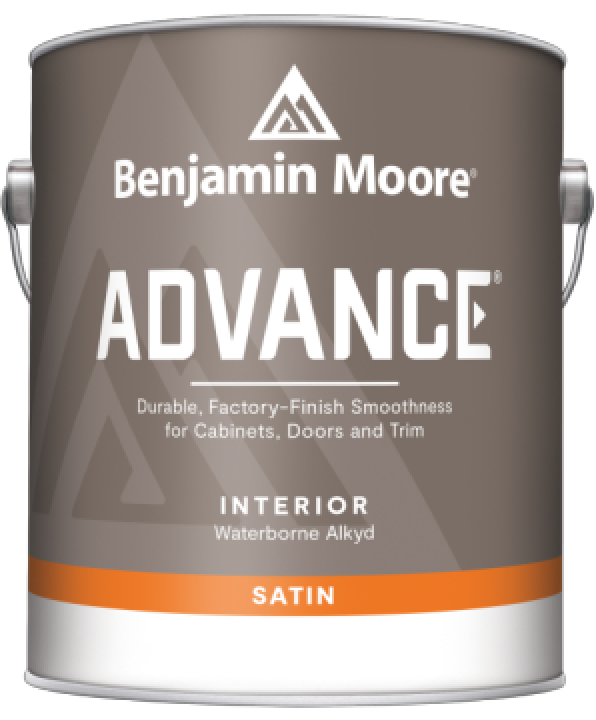
Benjamin Moore ADVANCE
ADVANCE is a premium water-based paint that’s made with alkyd resins, which replicate the flow and feel of oil paint. Created especially for interior doors, cabinets, and trim, ADVANCE forms a durable, scrubbable surface. Benjamin Moore ADVANCE offers a lot of bang for your buck, with smooth application and a hard gloss finish that holds up over time. It’s our number one choice for interior doors.
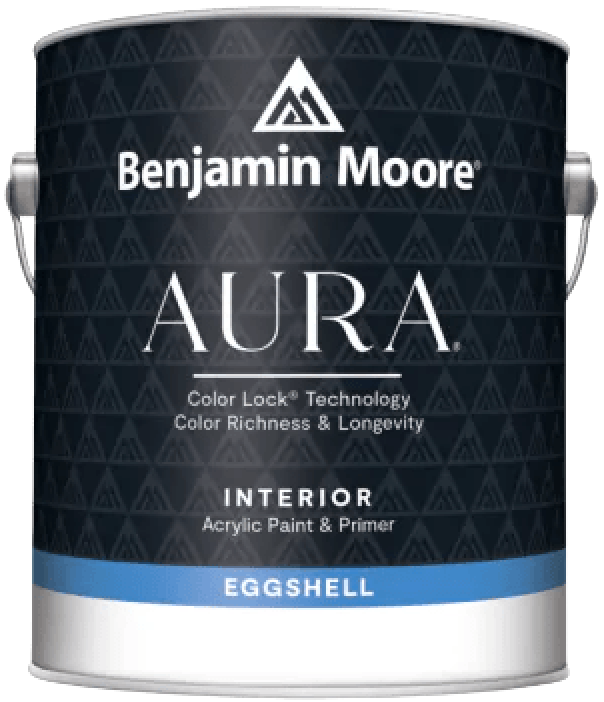
Benjamin Moore AURA
AURA is an ultra-premium waterborne alkyd paint that offers Benjamin Moore’s best coverage and a richer depth of color; it’s scrubbable and scuff-resistant, which makes it a great option for doors.
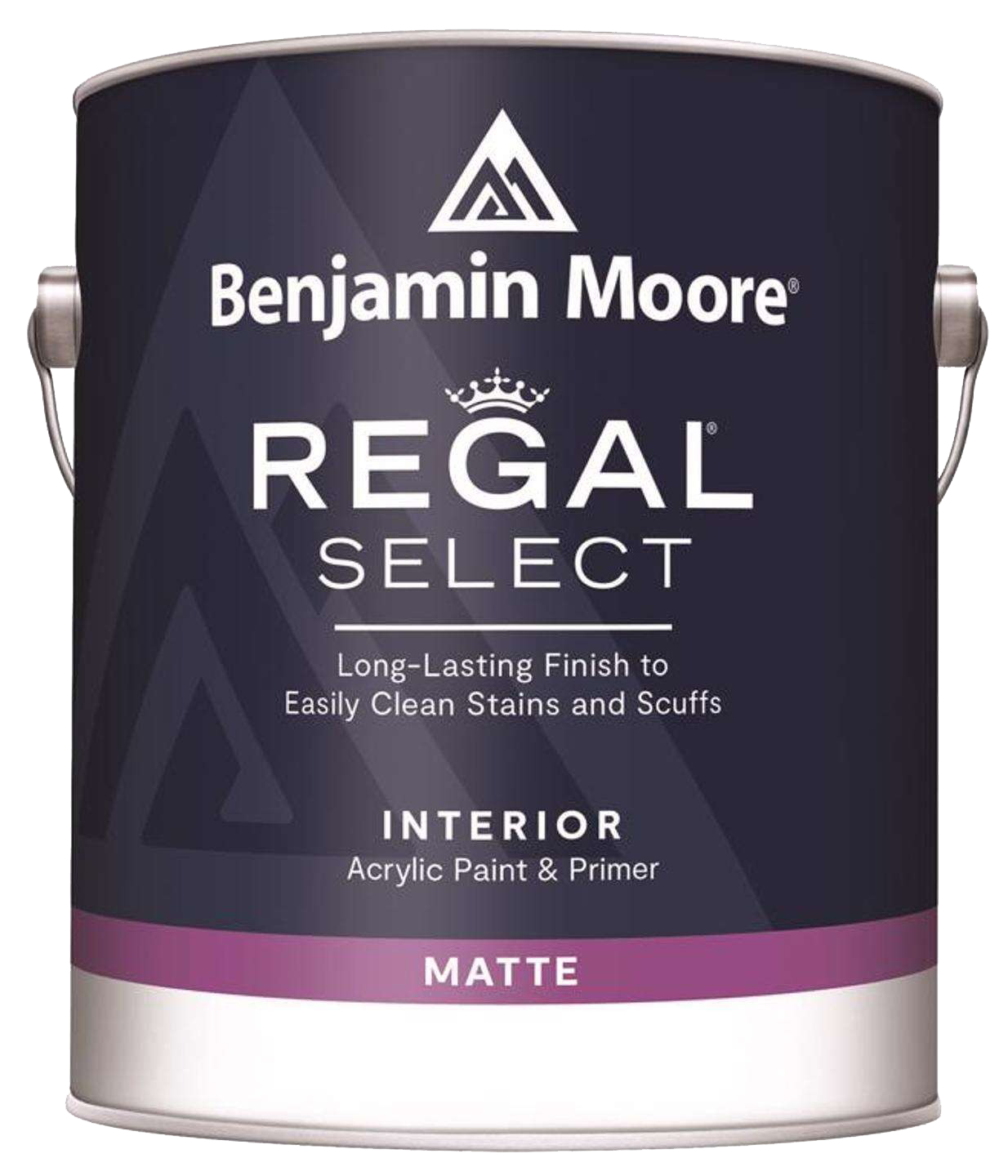
Benjamin Moore Regal Select
Regal Select is a premium durable acrylic latex that’s easy to use, affordable, and washable. While Regal is not quite as durable as ADVANCE and AURA, it is slightly less expensive and makes a high quality paint option for interior doors and trim.
The Best Paint Finish for Interior Doors
The most important feature in interior door paint is durability. Since glossy paint sheens are more washable and durable, they are the go-to choice for doors. Here are the three most popular paint sheens for doors:
- Satin: A low-key gloss that is easy to work with and provides a soft glow
- Semi-Gloss: Medium shine that brightens woodwork by catching the light; the most popular sheen
- High-Gloss: Bold and shiny, highlights molding and carvings; difficult to work with, it’s usually used on entry doors
A Few Tips for Choosing an Interior Door Paint Color
While the standard color for interior doors has traditionally been a shade of white, interior designers know that a splash of color goes a long way. Check out these creative and classy combinations!
Aqua and sage green create a cottage vibe, while red is the perfect accent in a midcentury modern interior:
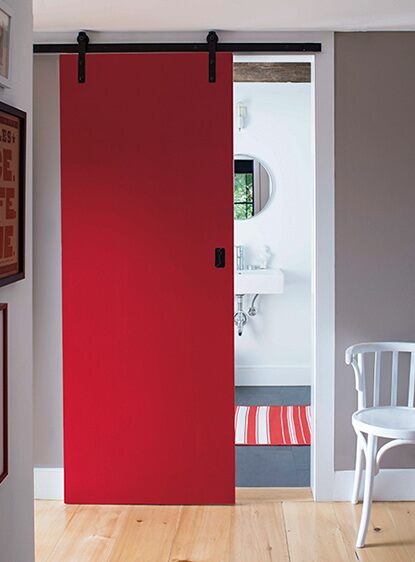
Black doors have become quite popular since the rise of the farmhouse trend, but they’ve been around for centuries. Go for black when you want to add a touch of traditional elegance to your home.

A deep navy color like Benjamin Moore Hale Navy is a stylish alternative to black, making a unique door and trim color in this dark color scheme:
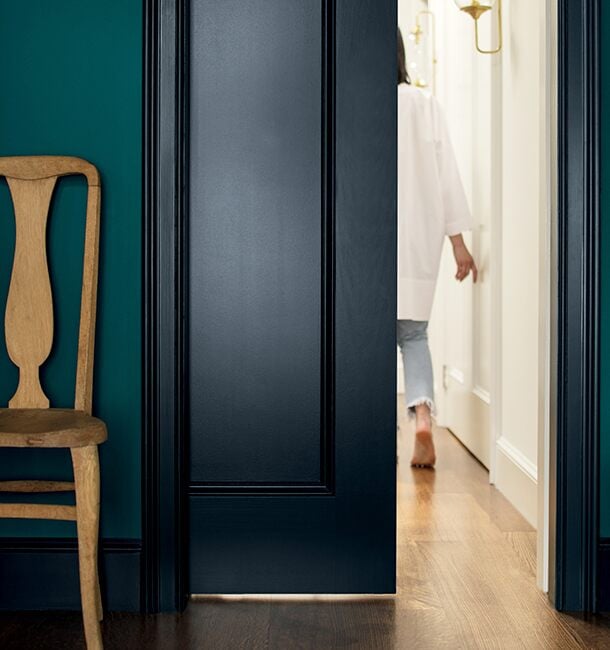
Painting interior doors and trim the same color as the walls creates an elegant, tone-on-tone look that highlights beautiful woodwork:

Where to Get Interior Door Paint
Ring’s End carries a wide selection of Benjamin Moore paints in-store and online, shipping anywhere in the U.S. For more helpful tips on selecting paint products, check out our Interior Paint Guide. Our paint professionals are ready and waiting to answer any questions you have about your paint project. Chat with us online or text us at (203) PRO-HELP.


